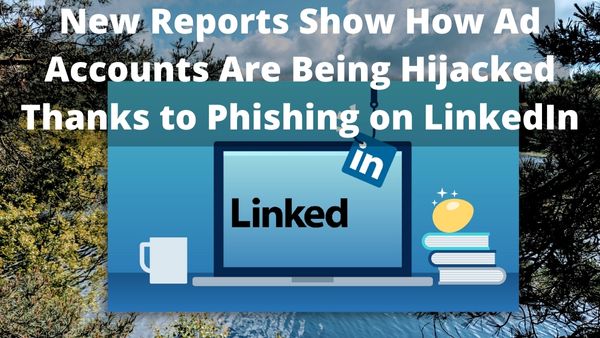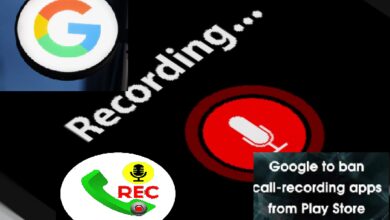New Reports Show How Ad Accounts Are Being Hijacked Thanks to Phishing on LinkedIn

New Reports Show How Ad Accounts Are Being Hijacked Thanks to Phishing on LinkedIn. When Facebook-based ad experts dip their toes into the dark seas of anonymous networking, fraudsters cling on to them like aquatic parasites. And according to two different studies, LinkedIn has developed into a key route for criminals attempting to assault advertising professionals with intrusive spyware, perhaps in order to produce phoney Facebook ad campaigns.
WithSecure, a cyber security company, revealed on Tuesday that it had discovered a spear phishing campaign they’d called “DUCKTAIL.” The scam has been using infostealer malware for years, which is supposedly quite good at gaining “high level access” to Facebook Business/Ads accounts by snooping around on users’ browser cookies and hard drives.
These con artists, who according to researchers were being controlled by a mastermind stationed in Vietnam, hunt for potential victims on LinkedIn and focus on individuals who have the highest possibility of leveraging Facebook’s advertising network. People who work in “digital media” or “digital marketing” are frequently named as victims.
Then, hackers posing as product providers try to force the victims to download malicious files with image sets that are specifically suited to their location and relevant to the conversation. The files are hosted on cloud services like Dropbox or MediaFire, but when a user downloads them unintentionally, malware gets into their computers and browsers in search of Facebook-related information.
The virus then searches for browser cookies, and more particularly for Facebook login information. Additionally, the malware will attempt to collect IP addresses, account information, geolocation, and other information from some of the most widely used web browsers. Once inside, the hackers modify the Facebook Business account’s permissions to give the impression that they are the account’s owner. It appears that all of this user data is being sent to private Telegram channels where hackers converse.
It’s not the first time that scammers have shown a special fondness for Facebook-based advertisers, and it’s quite probable that these accounts have been taken over in order to run fraudulent advertising campaigns. As they have money associated with them, Facebook ad accounts are attractive because they enable hackers to spend a lot of money quickly.
In 2019, one fraudulent advertising campaign ran scam advertisements for $10,000 per day. In 2021, a different user described how hackers began spending $15,000 per day on advertisements for “Santa Clause on a stripper pole” ornaments, all the while renaming her Facebook accounts and tricking others into clicking on nefarious links.
This most recent research could provide some of the most in-depth understanding of these ad account phishing businesses that security experts have ever had. According to WithSecure experts, the con artists choose just a few victims so as not to draw too much notice.
The business added that they have been monitoring this scam since late 2021, when they came across an unknown infection, although the fraud may have started as early as 2018. The business claimed that Facebook’s parent firm Meta provided research materials for them.
A spokesperson for Meta stated in an email that the company welcomes this research and that it is “aware of these specific fraudsters, frequently enforces against them, and continues to enhance our systems to identify these efforts. We advise consumers to be careful about what software they put on their devices and where the programme comes from because this virus is often obtained off-platform.
While assuring reporters that they urged users of ad accounts to follow their best practices, the business directed customers to their support center. Of course, the network already has its hands enough dealing with deceptive or fake advertisements that are properly purchased through the site. Advertisements for untested or even hazardous medical therapies are common on Facebook, according to a new investigation.
This past Saturday, a different analysis from the cyber security firm Check Point revealed that LinkedIn continues to be the most popular website for phishing scams. Users are frequently inundated with emails that attempt to seem official or that appear to have originated from LinkedIn itself, all in an effort to trick users into providing personal information or clicking on harmful links.
With a 45 percent market share, LinkedIn continues to be the most popular brand used by scammers in phishing scams, with Microsoft coming in second with a 13 percent market share.
LinkedIn claimed in an email that it “works internally teams to take action against individuals who seek to damage LinkedIn members through phishing. We urge users to report questionable communications and assist them in finding out more about their options for personal safety, such as enabling two-step verification. They also directed users to the support section of the business.
- PSO2 New Genesis Will Have Hololive Production VTuber Avatar Parts
- Google launches Street View in India after years of rejection
- Read The Chat That Made Google Fire Engineer Who Said AI Technology Is ‘Conscious’
- Smartphone too hot to handle? How to keep iPhone, Android phone from overheating in summer weather
Although the website does provide some basic phishing precautions for users to employ, the most of them focus around not receiving chat invitations or tapping on links from persons you don’t know.
Check out Gizmodo’s instructions for securing your browser in the interim to perhaps prevent a bad actor from hooking you up during their subsequent phishing expedition.






